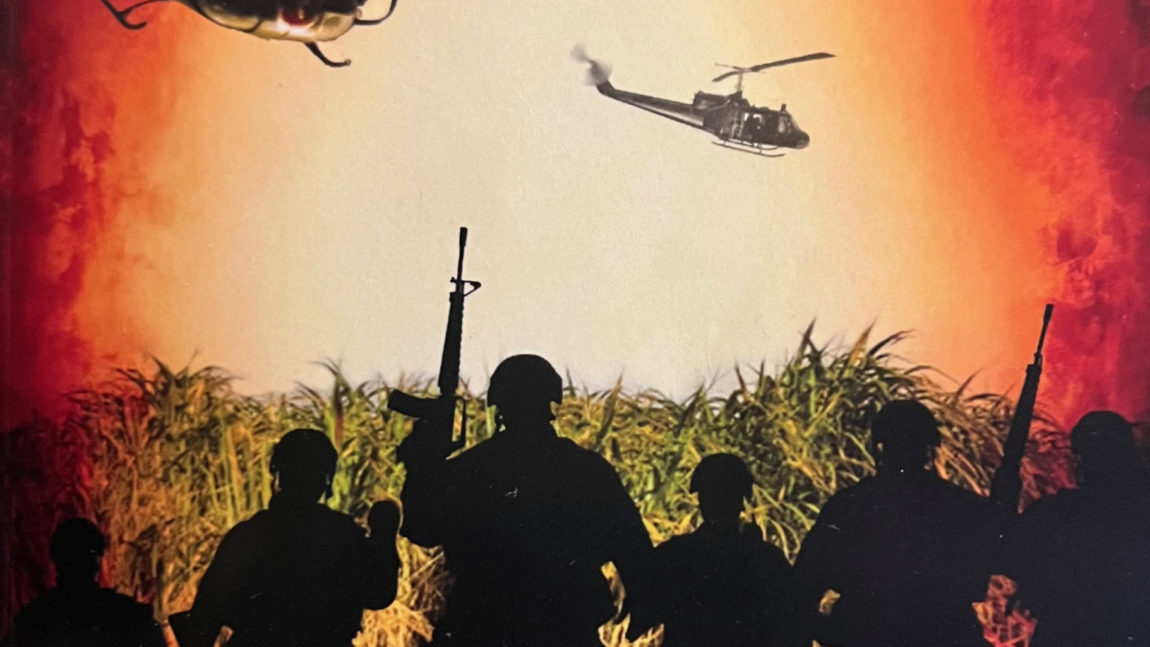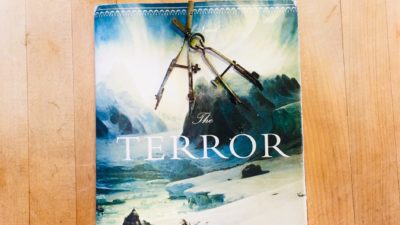For anyone looking to read a what-it-was-really-like story about the Vietnam war, “Cherries – A Vietnam War Novel” by John Podlaski is not a must read – “Cherries” is a SHALL read. “Cherries” is a “five-star” book on a scale of one to five. Definitely recommended.
“Cherries” follows the path of John Kowalski from his departure from the Overseas Processing Terminal in Oakland, California, after being drafted and completing U.S. Army Training, to Vietnam, through his experiences (an understatement), and then back home to his front porch.
According to Podlaski’s author page on Amazon, in the early 1980’s, the first draft of Cherries was written (apparently in the first person) as a memoir. Then, at the suggestion of a potential publisher, he re-wrote the book as a novel in the third person. The novel still was not published and sat in storage for years, until his daughter retyped the manuscript, and was eventually self-published. Thus, “Cherries” is not written as classic hero’s journey, but rather more like an exillerating survival journey to hell and back.
This history of the book’s creation makes it unique and more compelling. The story is told mostly in the third person (more on this below), but the reader understands that apparently Podalski is actually just telling his story. So the reader knows that what is happening in these pages actually happened, though told in third person.
It is not a spoiler to know that the author of this book survived. Nothing is given away by that knowledge. Each event is brought to life in a new type of experience. Imagine reading, for example, Harry Potter, while knowing that Potter had actually penned a memoir about real events, changing some names. (Unlike Harry Potter, though, Podalski wants to go home.) This translates into something magical and, at times, coldly terrifying, as it must be when describing harrowing events about life and death.
For example, early in the book Kawalski (“Polack”) and Bill, buddies since basic training, purchase large Bowie knives at the PX upon their arrival in Vietnam. (P. 35.) “However, they would both find out later that it was the most valuable tool used while patrolling through the jungle.” (Id.) Polack and Bill were separated when assigned to different groups in the same battalion. Later, when on patrol searching for a missing squad, John finds his friend dead, propped up against a tree, the “handle of his own Bowie knife was sticking out of his chest.” (P. 262.) The other members of the squad had their necks cut, apparently in their sleep with Bill’s knife.
There are other such events of loss that are told in a matter-of-fact tone, which have the effect of making scenes more moving. However, because “Cherries” was originally written as a memoir, the opportunity for the author to use foreshadowing, and promises of what the reader can expect in plot and character arcs, seem to have been partially lost when the book was rewritten in third person. There was little mention of the significance of the Bowie, before or after the passing of Bill, discussed above. These are not necessarily criticisisms. Rather, this reader (who has not experienced war) is given the stark impression that such events were very difficult for Podlaski to even describe at all, and again, knowing that these events happened, the author’s voice has more impact. Indeed, the book was apparently written in part for the author’s friends and family to read, so they would have some understanding about what he went through, saving him the difficulty of retelling events verbally.
“Cherries” is filed with details that bring the journey to life and gives a sense of authenticity. Kowalski discusses gross details about: how he packed his ruck for humping through the jungle (P. 75-78); discovering and clearing “enemy” tunnels (117-124); finding other missing soldiers found with their heads chopped off (125); tragic loss of short-timers weeks before they were to go home (147); agent orange (173-174); chaos and fighting at a landing zone while disembarking from helicopters (215): care packages from home (223-224); typhoons (231); narrowly escaping booby traps (260-261); battles (267-270); saving lives (293); how he carried and operated a radio as part of a squad (302); potheads in bunkers (340); how soldier’s dealt with death — “don’t mean nothin’,” (359); ambushing and booby trapping the VC (369, 375); an overrun base (380); promotions (386-389); types of men in battalions (390), and the process of going home.
One of the striking aspects of “Cherries” is the description of the path taken from the United States, boarding planes and trucks, places slept and restaurants and bars visited, before Polack finds himself standing in the jungles of Vietnam where dying or killing is suddenly very real. At the end, the author describes leaving the field, processing out of Vietnam, returning his rifle and gear, boarding a plane and finding himself back home sitting on his front poach days later. Everything in between happened, and it’s difficult to process. Very surreal. This reader is still processing the story. Inspiring and horrifying, and everything in between.
From the perspective of this reviewer, who is also an author, there are several observations about the writing which are not necessarily criticisms. Podlaski apparently tries to avoid the perceived overuse of the dialogue attribute “said.” It has been taught in many a writing manual and writer’s class that new authors often try to avoid “said,” and in turn use a wide spectrum of dialogue tags. Podlaski uses tags including but are not limited to: “added,” “barked, “asked,” “mumbled,” “spat,” “questioned,” “consoled,” “hollered,” “interrupted,” and many more. And though seemingly overused, actually most authors would preferably use, “John said,” an attribute that becomes invisible to the reader. Instead of using attributes like “spat,” – i.e. instead of telling – the spit is shown. “Show don’t tell,” being the standard mantra of most prose teachers.
All that being said, JK Rowling famously (or infamously) uses varying dialogue attributes, and she is the world’s most successful author. Still, discriminating publishers will likely hone in on the overuse of attributes in dialogue as a sign of an inexperienced writer (even if untrue), and decide to reject a proposed novel after seeing the first page. In this instance, however, the Podlaski’s writing style comes across as being more genuine, and thus, it adds to the feeling for the reader that the story being told actually happened, in the tone of voice of a letter written home.
Which raises another observation: Polack’s ‘family,’ ‘friends,’ and ‘girlfriend’ are mentioned multiple times, however, they are not named, described or brought into the story. (See, e.g., pp. 282, 296, 328, 418.) It would be interesting to know more from Podlaski. One possibility is that after “Cherries” was changed to third person, the opportunity was lost to build the characters more. Back to “show don’t tell,” more insight on Polack’s family – i.e. what he stood to lose if he was mortally injured – would have added more to the plot and character arcs. Maybe this was part of the difficulty of changing a memoir to a third person novel – the reader of a novel may expect more plot and character building.
Also, by re-writing the book to a novel, it seems that there are times when the omniscience of the narrator is ambiguous. Of course, the writer of a memoir only knows what they know – he cannot read the minds of others in the story. However, when a novel is written in third person, the narrator should at least be able to be in the mind of the main character, and often in the mind of other characters from their perspective in separate scenes when they are the lead.
In “Cherries,” there are few moments when the author writes about what Polack is thinking. For example, “John was beginning to feel guilty about no going out on the small recon patrols.” (P. 307.) So the narrator is omniscient at least about what John is thinking. Often, the thoughts and feelings of other characters are revealed only through dialogue, possibly a left over from the original memoir format of the book. There are other times where it is suggested the narrator can, but doesn’t fully, get into the mind of other characters. For example, at page 349:
John knew all too well how they felt; he felts the same way before heading into the Iron Triangle and the area where Zeke died. He did not have firsthand knowledge regarding the valley, but had a deep respect for the opinions of those who had been there.
And that’s just thing: The narrator seems to know, at times, what John is thinking, and apparently has the ability to know what other characters are thinking, but doesn’t disclose their thoughts. In most novels like this, the narrator should be able to describe “the valley” as if from firsthand knowledge of the narrator (whether the main character is there at that moment or not), but the narrator does not do this; instead, the story is mostly told as if it is a memoir, which of course, it actually is. Despite mostly not seeing into the minds of other characters, at the end of the book, dialogue between other characters happens when John is not around, as if suddenly the narrator can know what others are thinking. The reader may feel that they would have liked to know more about what other characters were thinking and feeling, for example when Zeke and Bill died alone and under tragic circumstances, or what Sixpack regretted when he was severely injured.
All that out of the way, any rough edges of “Cherries” do not detract from the story, rather, they add character and overall tone of something genuine, like a letter written home from the front lines, being read out load, with all the imperfections one might imagine.
The events of “Cherries” take place the year this reviewer was born. Unless one was there, one cannot truly image what fighting in that war, or any war, must have been like. “Cherries” gives readers at least some modicum of an idea. Moreover, Podlaski does not lecture the reader either way about the politics or morality of the Vietnam war. This is a story about what actually happened, regardless of what one may think about that war. “Cherries” provides more reason to respect and honor all those who lived and died through it.
Thank you, Mr. Podlaski, for sharing your story.
For more information about the author, including slide shows and photos, visit his website:



